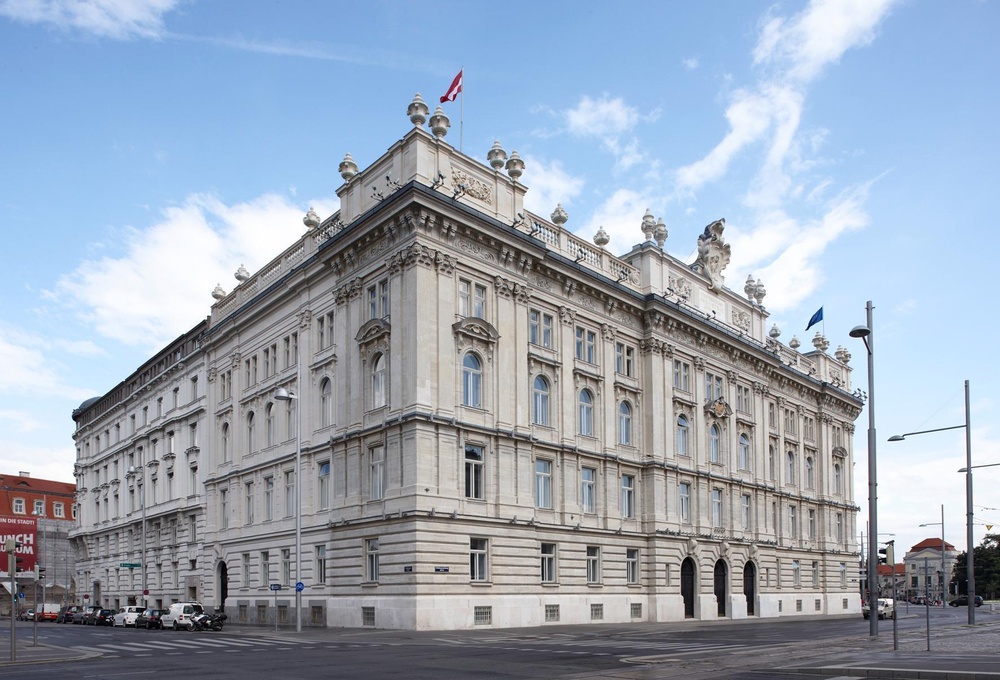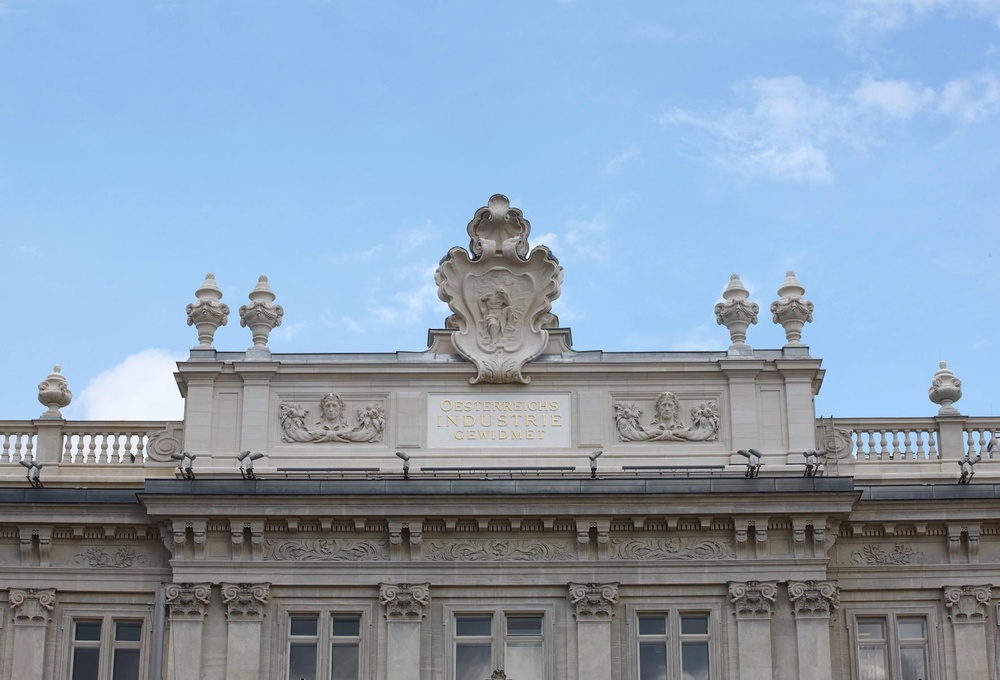

The House of Industry on Schwarzenbergplatz 4 in Vienna is one of the most outstanding examples of an architectural style called "Late Historicism". The building is located next to the Vienna "Ringstrasse", the magnificent ring road around the old city centre. Around the beginning of the 20th century, the Vienna Urban Development Fund began selling land outside the Ringstrasse and the river Wien, shortly after the completion of the street.
This late phase of Historicism was marked by architects such as Friedrich von Schmidt, Theophil von Hansen, Karl von Hasenauer, Heinrich von Ferstel and Karl König.
Designed by architect Karl König, the House of Industry was built between 1906 and 1909. Monumental in character but dominated by clear linearity, the building is modelled on Roman-inspired 17th century Classicism. The plain, angular façade draws from elements of 19th century Historicism, while deviating from the more ornate style typical of pre-turn-of-the-century Ringstrasse buildings.
The House of Industry was one of Vienna's last squared stone masonry buildings. Its façade is lined with Leitha sandstone from a quarry near Stotzing in Burgenland. Algal limestone from the Mannersdorf region, as well as granite, were used for the wall base. The roof was made of Eternit slabs, a new roofing product patented in 1901.
The four-storey corner building is crowned by a huge, three-part façade with stone balustrades and cast zinc vases on both sides. The façade bears the inscription "Dedicated to Austria's Industry". There is a huge stone cartouche above the inscription. It is made from a 42 cubic metre block and shows a relief of Hephaestus depicted in a comtemplative pose.
Representing strength paired with intelligence, the Greek god Hephaestus is a symbol of industry and the only god who was also a craftsman. A skilled blacksmith, he served human civilisation with his creations, one of his masterpieces being the arms of Achilles.














